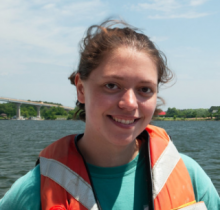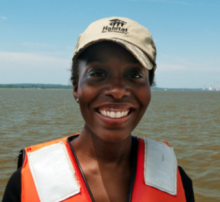Eight students will be presenting the summer work at the Ocean Sciences Meeting in March 2022!
Students Research Publications: Using fisheries observation data to develop a predictive species distribution model for endangered sea turtles
Year:
2021Authors:
Degenford, J.H.*, D, Liang, H, Bailey, A.L. Hoover, P. Zarate, J. Azócar, D. Devia, J. Alfaro‐Shigueto, J.C. Mangel, N. de Paz, J.Q. Davila, D.S. Barturen, J.M. Rguez‐Baron, A.S. Williard, C. Fahy, N. Barbour, and G.L. ShillingerSource:
Conservation Science and Practice, https://doi.org/10.1111/csp2.349Abstract:
The Eastern Pacific leatherback turtle population (Dermochelys coriacea) has declined precipitously in recent years. One of the major causes is bycatch from coastal and pelagic fisheries. Fisheries observations are often underutilized, despite strong potential for this data to affect policy. In this study, we created a spatiotemporal species distribution model that synthesizes fisheries observations with remotely sensed environmental data. The model will be developed into a dynamic management tool for the Eastern Pacific leatherback population. We obtained leatherback observation data from multiple fisheries that have operated in the Southeast Pacific (2001–2018). A dynamic Poisson point process model was applied to predict leatherback intensity (observation per unit area) as a function of dynamic environmental covariates. This model serves as a tool for application by managers and stakeholders toward the reduction of leatherback turtle bycatch and provides a modeling framework for analyzing fisheries observations from other vulnerable populations and species.






































